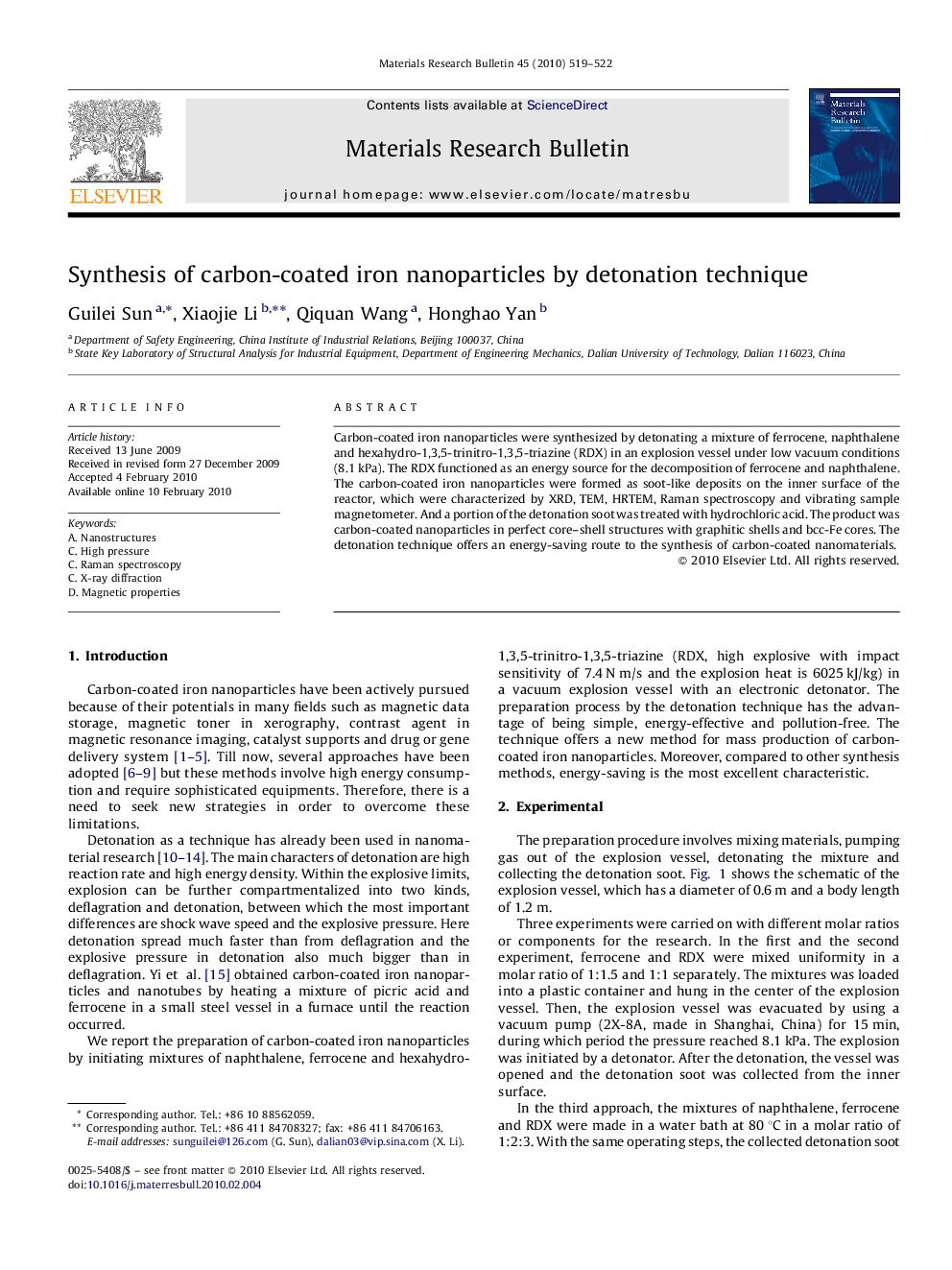| Article ID | Journal | Published Year | Pages | File Type |
|---|---|---|---|---|
| 1490898 | Materials Research Bulletin | 2010 | 4 Pages |
Carbon-coated iron nanoparticles were synthesized by detonating a mixture of ferrocene, naphthalene and hexahydro-1,3,5-trinitro-1,3,5-triazine (RDX) in an explosion vessel under low vacuum conditions (8.1 kPa). The RDX functioned as an energy source for the decomposition of ferrocene and naphthalene. The carbon-coated iron nanoparticles were formed as soot-like deposits on the inner surface of the reactor, which were characterized by XRD, TEM, HRTEM, Raman spectroscopy and vibrating sample magnetometer. And a portion of the detonation soot was treated with hydrochloric acid. The product was carbon-coated nanoparticles in perfect core–shell structures with graphitic shells and bcc-Fe cores. The detonation technique offers an energy-saving route to the synthesis of carbon-coated nanomaterials.
